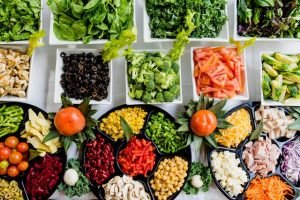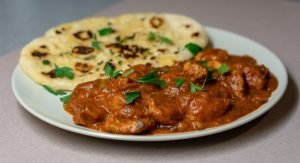I’m not a spice expert. I’m just a spice lover. I don’t know if my garam masala recipe is the best one, but it’s the one I use with success time after time. It was given to me by a friend who learned it from her mother in India, and it has become my go-to seasoning for most recipes.
The thing about garam masala is that it’s not just one spice. It’s actually made up of five or six different spices, which are all ground together. While I do have a favorite brand that I use for this recipe (see below), you can also buy the individual spices and grind them yourself in a coffee grinder or blender.
Then there’s the question of whether to buy whole spices and grind them yourself, or to buy preground spices in little jars or bags. My Mediterranean grandmother always told me to never buy preground spices, because they quickly lose their flavor once they’re exposed to air. So she always bought whole ones and ground them herself using a spice grinder (the kind you hand crank).
But when I asked my Indian friend about this, she shrugged her shoulders and said she uses both whole and preground spices all the time without noticing a difference in taste.
Ever wonder what’s the secret behind Indian food’s pungency? Garam Masala! A mixture of spices, often used to flavor food. The blend of spices varies according to your taste and region. There are many prefabricated ground mixes available on the market, but even you can make your own at home!
The word garam means ‘hot’, while masala simply refers to a mixture of spices. You can use this as a dry rub or sprinkle it on fried foods before serving to add pungency.
Why is it important in Indian cooking? Garam masala is used in many recipes such as curries, soups, stews, and rice dishes. If you want that authentic Indian taste, then you need to add garam masala into your cooking.
Garam masala is an aromatic blend of ground spices, originating from India and used extensively in Indian cuisine. The spices for garam masala are usually toasted to bring out more flavour and aroma, and then ground.
Garam masala is a mixture of several different spices, the exact composition varying according to regional and personal taste. The word garam refers to “heating the body” in the Ayurvedic sense of the word, as these spices are believed to elevate body temperature in Ayurvedic medicine. Historically, our ancestors used a combination of hot spices to add heat to their food or as a way of adding heat to their bodies when living in colder climates.
Although garam masala is thought of as a single spice it’s really a combination of many different ones that you can use depending on what you need for your recipe
In the world of spices, few are as revered as garam masala. This is a blend used in Indian cooking and it can be found in many forms. Some blends will include more turmeric, for example, while others may be heavier on the cumin. There are many ways to make garam masala and each region of India has its own version.
But even with all of that variety, there is one thing that every garam masala has in common: it is meant to be warming. That’s where the “garam” part of the name comes from. This combination of spices is said to help warm the body by increasing circulation and flushing out toxins.
Garam Masala is a powder or a blend of spices used in Indian cooking. It is made from a mixture of different spices, usually including cardamom, cinnamon, cloves, coriander and cumin. Garam masala has been around for centuries – it was created by the Mughals in north-western India. Garam masala is often used in dishes that are heavy on the spices (think Indian food) but it’s also often used to season curries and other dishes that call for more than one spice. The name “garam” means “hot”, while “masala” means “mixture”.
Garam masala is made by boiling and roasting the spices together until they become dry. They are then ground into a powder that can be stored for months at a time. Some recipes call for whole spices instead of ground ones; this requires more time, but it can create some very flavorful dishes.
The best part about garam masala is that you can make it yourself! Just head to your local Indian grocery store and pick up some whole spices like cinnamon sticks, cardamom pods and black peppercorns. Grind them down yourself with a mortar and pestle or buy them already ground up for an extra kick
Garam masala is a blend of ground spices common in India and other South Asian cuisines. Literally translating to “hot spices,” it usually contains a mix of five or more of the following: black pepper, cardamom, cinnamon/cassia, cloves, coriander, cumin, nutmeg, star anise and turmeric.
Although garam masala doesn’t require much preparation time and can be added to a dish in its powdered form, some Indian (and even non-Indian) cooks prefer to make it afresh at home by roasting whole spices and grinding them in a mortar and pestle or spice grinder.
It’s not necessary to use all the spices listed above–some cooks prefer to use only four spices (called “choti” garam masala), while others opt for more than eight (called “badi” garam masala).
There’s no definite answer to how long garam masala will keep, because it’s different for each blend. If you purchase your spices in bulk, make smaller batches at a time and use them up more quickly. But if you have a large family or cook a lot of Indian food, go ahead and make a larger batch and store it in an airtight container in a cool, dry place (like your pantry).
Whenever possible, buy whole spices and grind them yourself. You’ll want to do this even if you purchase pre-ground garam masala, because the flavor will be so much fresher. Keep your whole spices in an airtight container in a cool dark place (a kitchen drawer works well), and grind only as often as needed.
If you’re looking for recipes that feature garam masala, check out this extensive list of Indian curries on The Spruce Eats. And if you’re feeling adventurous, try making your own blend!

